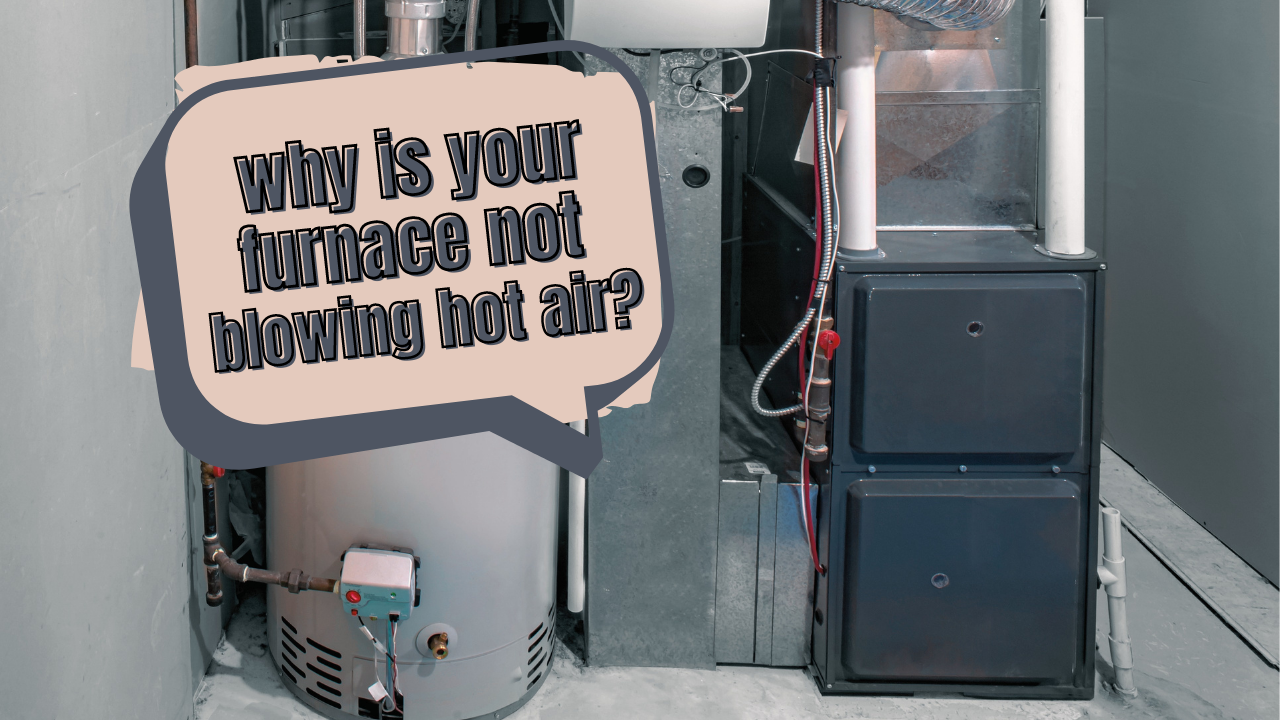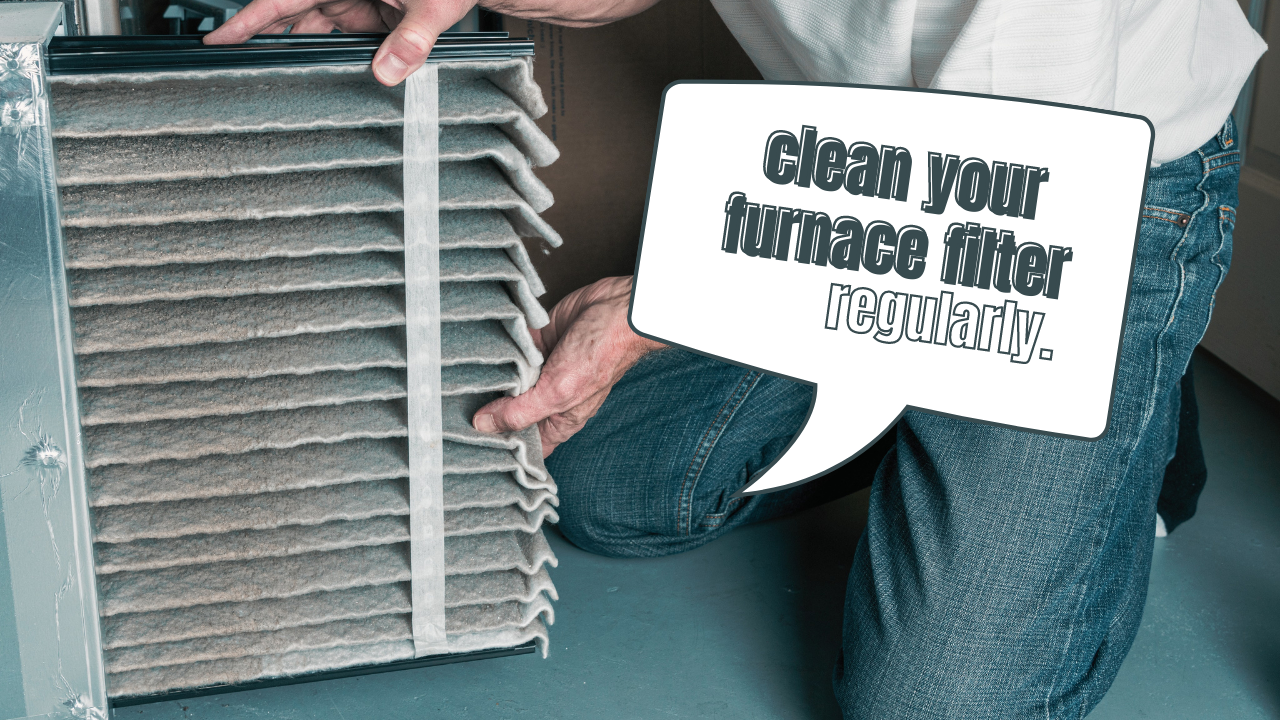If your furnace does not blow hot air in the cold winter, that can be quite a bummer. Nobody likes to be stuck with a furnace that blows cold air in freezing weather. Suppose you find yourself in this situation – don't fret. Fortunately, you can follow several DIY fixes to ensure your furnace is back to working as intended.
10 Common Reasons Why Your Furnace is Not Blowing Hot Air

Below are the typical culprits why your furnace is not blowing warm air.
1. Issues with the Thermostat
If you have an electric furnace that's not blowing hot air, this may suggest potential thermostat issues. Let's discuss some of the other related problems with a faulty thermostat.
2. Problems with the Pilot Light
If you're wondering why your furnace is not blowing hot air– this may suggest an issue with the pilot light or ignition system. One way to check the problem is to see if the pilot light is on. If the light is out, consult the unit's user manual to relight it properly. If it still doesn't function, this may be due to a thermocouple failure. It would be best to consult a local HVAC company as this task can be pretty challenging for a DIY attempt.
Important Note: Before hiring a professional, ensure that the gas valve is opened and the pilot light isn't too filthy to light the gas. In some cases, cleaning the pilot light is enough to improve the gas flow.
3. Deficient Fuel Source
Every furnace requires fuel to work – such as electricity, gas, or oil. This will depend on the type of furnace you have at home. If you have an oil furnace, don't forget to check the tank. An empty tank means your furnace won't have oil to burn to give off heat.
Meanwhile, a gas furnace won't blow out hot air if the gas valve is closed. Seized valves may turn into a pressing issue after quite a while, so it's best to assess the situation from time to time regularly. Homeowners with an electric furnace with problems providing hot air may be dealing with a blown fuse or breaker.
4. Worn-out Ductwork
Since your home's ductwork is subject to wear and tear over time, it will naturally result in weak spots and leaks. These ducts are placed outside your home's heated area, so they are directly exposed to extreme temperature fluctuations daily.
5. Furnace Filter Issues

If you have a filthy/clogged filter, this may only restrict the airflow in your furnace. It affects the unit's ability to disperse warm air within your home evenly. In some cases, simply cleaning the filter may solve the problem.
6. Issues with the Condensate Lines
Generally, condensate lines must be kept clean (and open) most of the time. These are responsible for draining the water regularly, so it accumulates dirt and may get clogged after some time. Once the excessive build-up gets out of control, the furnace may otherwise blow cold air and shut down. Ensure a regular inspection from a local HVAC professional so your condensate lines do not have dirt and grime build-up.
7. High Limit Switch Problems
If your furnace deals with frequent overheating issues, this may lead to your high limit switch failure. This is one component in your furnace that you don't want to fail. If this fails, the internal unit will believe the furnace is overheating and may turn on your fan to cool it down. This switch component can be tricky to find, so you may want to tap the assistance of an HVAC technician near you.
8. Problems with Your Gas Valve
Keep in mind that a gas furnace will need regular cleaning, considering any dirt and debris build-up may cause the gas valve to stop functioning entirely. This issue is prevalent in old gas furnaces, as the gas valve has been through wear and tear. This may cause the furnace not to blow hot air.
9. Issues with the Burner
If you have clogged furnace burners, there's a limit on fuel that your furnace needs to blow out hot air continuously. Suppose your fan continues to run; it's common for the system to blow out cold air instead.
10. Worn-out or Filthy Flame Sensor
Lastly, the flame sensor is another furnace component that may be filthy over time (or worn out). So if it is damaged in any way, it may only turn the burner off consistently– which is why cold air is being blown into your home instead of hot air. Simple cleaning will suffice if it is a mere filthy sensor problem. But if the component is damaged, it will need replacement spearheaded by a professional HVAC technician. (Related: Furnace Replacement: The Homeowner’s Cost Guide)
Frequently Asked Questions (FAQs)
How does a furnace or heater work?
Knowing how your heater works can help you better understand what may go wrong. Many safety features are built into furnaces to keep an eye out for excessive temperatures and combustion fumes so they are adequately ventilated. Another effective method of heating your house is to pair a heat pump with an electric air handler. If the temperature is below 35 to 45 degrees Fahrenheit, the electric air handler may be able to provide additional heat depending on the system specifications.
How often should I have my furnace assessed by a professional?
Twice a year for maintenance tune-ups is usually recommended. This should happen in the spring and fall for your heat pump or central air conditioner. Before it gets cold, the technician may inspect your HVAC system and make any required adjustments or repairs. Not only will it keep your unit operating effectively, but it also lowers the chance of unforeseen breakdowns and costlier issues down the road.
What are some furnace troubleshooting tips if the unit is not blowing hot air?
If your heater isn't blowing hot air, you may try the following furnace troubleshooting tips.
